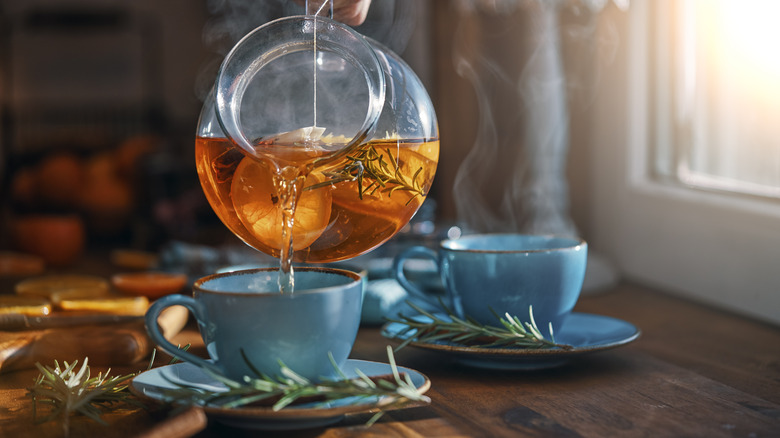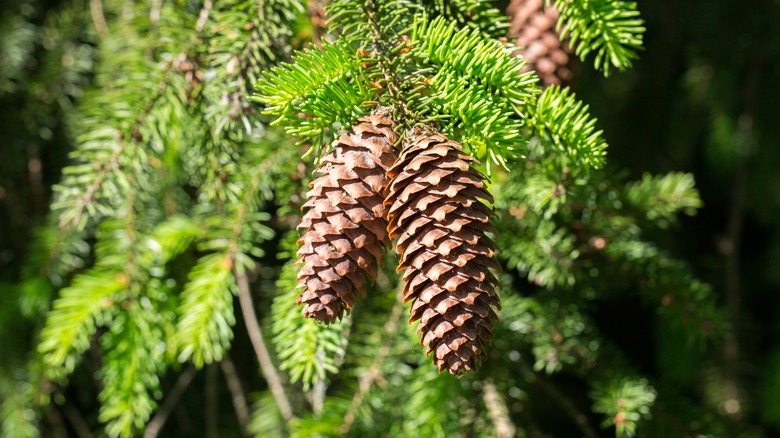The Safety Tips You Need Before Brewing Your Own Pine Needle Tea
With so many edible plants and flowers out there, sometimes right in your backyard, foraging for food is an enticing proposition. However, safety is of the utmost importance when foraging, especially when it comes to brewing your own pine needle tea. According to WebMD, pine needles are replete with vital nutrients, including vitamin C, amino acids, and flavonoids. To reap these benefits without incurring potential health risks, you must be extremely choosy about where you find your needles.
Not all pine trees produce needles that are safe for consumption. For instance, ponderosa and lodgepole pines contain toxic elements and should be avoided as a result, per MasterClass. When it comes to safe options, you can brew tea from the needles of Jeffrey pines, as well as white and eastern white pines. Also, keep in mind that some trees are related to pines but belong to a different family. These trees can have the same appearance but contain highly toxic substances that should not be consumed.
Yew trees are particularly dangerous
Along with avoiding toxic pines, you must also steer clear of yew trees when foraging for pine needles, according to WebMD. Yew trees look quite similar to pines thanks to their cone-like shape and long, slender leaves. Because of these similarities, it can be easy for those new to foraging to mistake yew trees for pines, which can result in exposure to harmful toxins. These challenges also apply when foraging for pine nuts, as it's easy to mistake yew seeds for pine nuts.
Virtually all parts of yew trees are toxic, as the species contains taxine. The National Library of Medicine reports that ingesting the components of a yew tree can lead to serious heart issues, including an increased heart rate and irregular heartbeat. These health effects can be fatal if not treated immediately, so foragers must be certain to avoid yew trees.
One distinguishing feature between yews and pines is the presence of male and female cones on a single tree. This is unique to pines, as these trees will have small male cones and large female cones on the same tree. Conversely, yews will only have one type of cone (i.e. male or female) on each tree.
Tips on brewing pine needle tea
Only move forward with the brewing process if you're certain that the pine needles you harvested are not from a yew or toxic species of pine. If you're not sure or cannot verify their safety with confidence, it's best to look for a commercially made brand of pine needle tea instead.
After identifying a safe pine tree to forage from, the location of the tree is another important consideration. You must source needles from a pine that is safeguarded against pesticide use and located in an isolated area. Trees that are in proximity to roadways could harbor dangerous toxins due to vehicle exhaust, so they should also be avoided.
When selecting needles, choose those that have retained their green color, as these are the freshest. After removing the needles, be sure to rinse them thoroughly to get rid of any lingering debris. At this point, needles should be cut down and deposited into a heat-safe cup or bowl, to which you'll add boiling water. Let the needles soak for approximately 20 minutes, then strain the liquid.
If you're willing to take the proper safety measures, pine needle tea is a nutritious and flavorful beverage totally worth the work. Perhaps you might even be inspired to make your own pine cone jam using your foraging knowledge.


